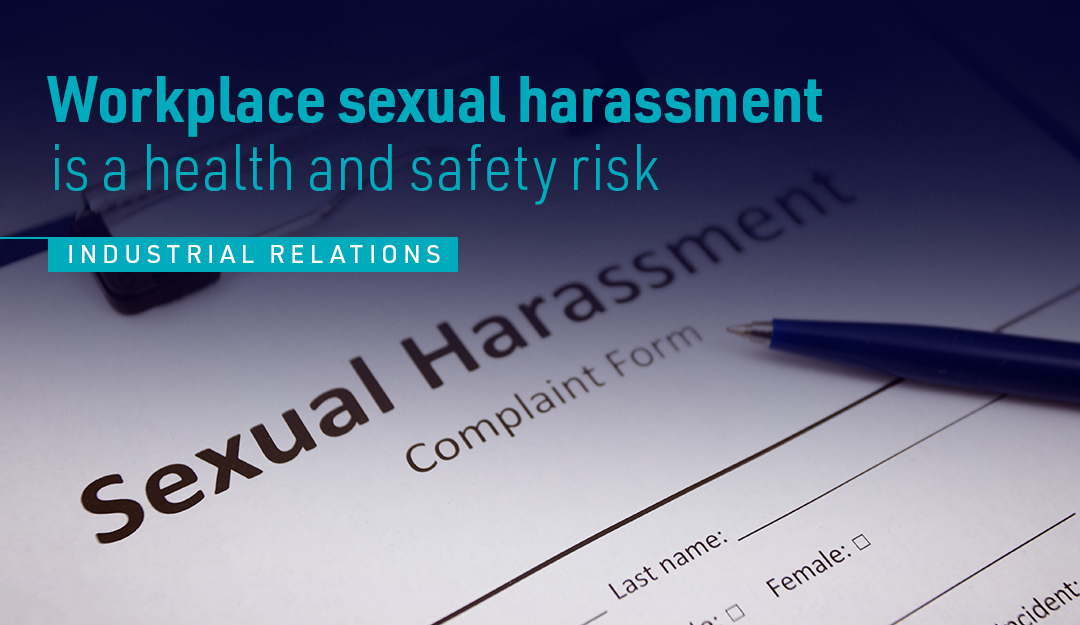Workplace sexual harassment is a health and safety risk

In March 2020, the Australian Human Rights Commission (Australia’s national human rights institution) published its Respect@Work Report, making 55 recommendations to the Commonwealth Government (as well as states and territories, employers and industry groups) to prevent and address sexual harassment in the workplace. The focus of many of the recommendations were on workplace prevention and response.
Sexual harassment is unwelcome conduct of a sexual nature which makes a person feel offended, humiliated or intimidated, where that reaction is reasonable in the circumstances. Sexual harassment can happen at a worker’s usual workplace or during a work‑related activity such as a work trip, camp, conference or an event. It can also occur between employees and students.
“Workplace sexual harassment is not inevitable. It is not acceptable. It is preventable.” — Kate Jenkins, Sex Discriminaton Commissioner, Australian Human Rights Commission.
Since 2003, the Australian Human Rights Commission has conducted four periodic surveys on the national experience of sexual harassment. Their most recent survey conducted in 2018 showed that sexual harassment in Australian workplaces is widespread and pervasive. One in three people experienced sexual harassment at work in the past five years.
Underpinning this aggregate figure is an equally shocking reflection of the gendered and intersectional nature of workplace sexual harassment. As the 2018 National Survey revealed, almost two in five women (39%) and just over one in four men (26%) have experienced sexual harassment in the workplace in the past five years. Aboriginal and Torres Strait Islander people were more likely to have experienced workplace sexual harassment than people who are non-Indigenous (53% and 32% respectively).
Sexual harassment is unlawful. Everyone in your workplace needs to understand and meet your workplace policies and the behaviours expected of them. Everyone should have information and training on what sexual harassment is, what to do if they are sexually harassed or if they witness someone else being harassed, and how to report it.
Safework Australia offers a number of easy-to-follow Infographic Guides:
- Infographic: What is workplace sexual harassment?
- Infographic: The impacts of sexual harassment
- Infographic: Workplace sexual harassment – Your WHS duties
- Infographic: Steps to prevent workplace sexual harassment
- Infographic: What to do if you are sexually harassed at work
At work, talk to your supervisor with the support of a colleague. If you feel that you can’t do this, call our office and the appropriate Organiser will assist you to get the support you need. The IEU is expert in workplace matters and support – 8410 0122.
Sources and further reading
https://www.lexology.com/library/detail.aspx?g=919da3f6-8fed-46e7-95b1-4dc803162c85
https://www.fwc.gov.au/issues-we-help/sexual-harassment/what-do-if-youre-sexually-harassed-work
https://www.safeworkaustralia.gov.au/safety-topic/hazards/workplace-sexual-harassment
https://www.fwc.gov.au/when-worker-sexually-harassed-work

